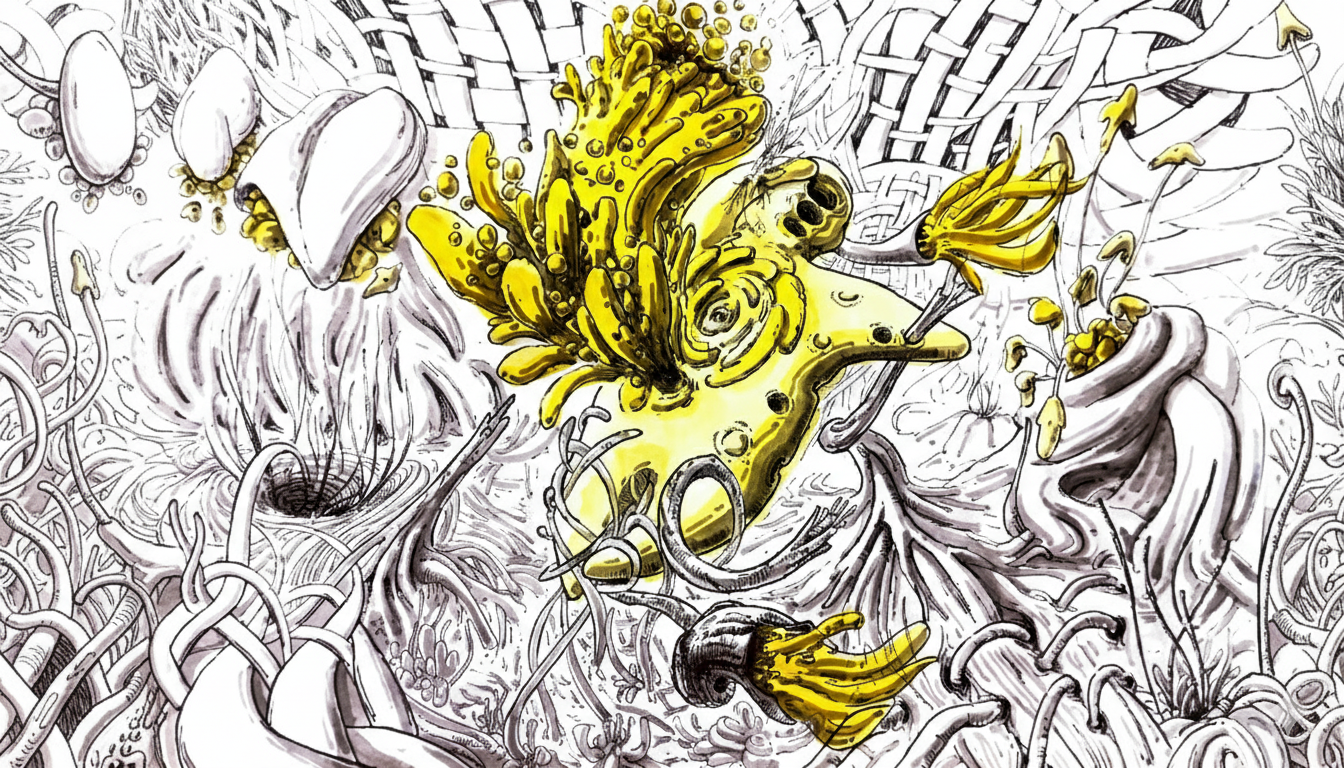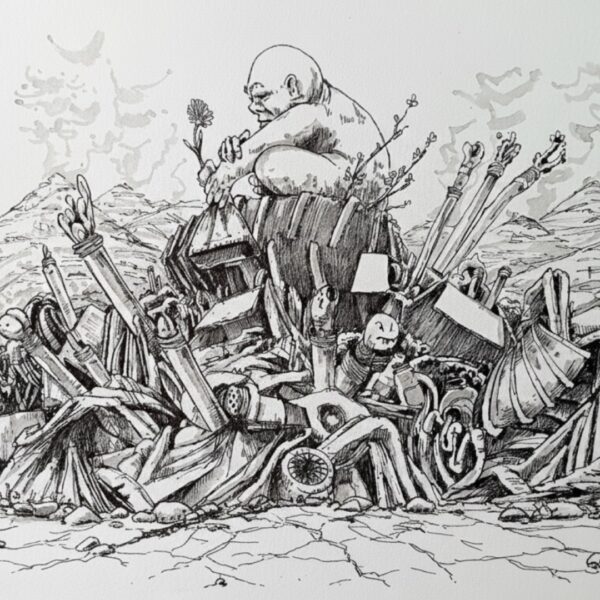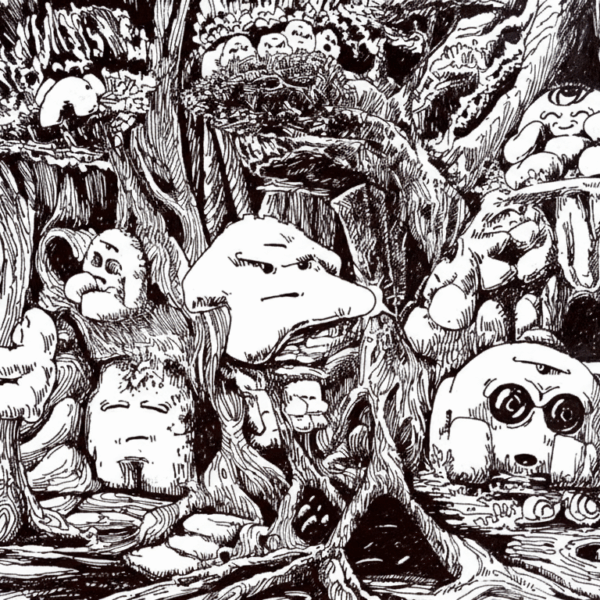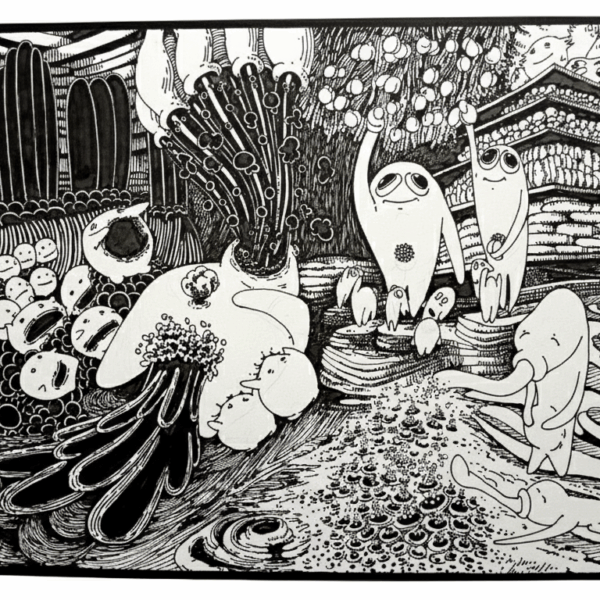“Just be present”—we have heard it countless times. Every “guru,” regardless of his expertise, uses it as “enlightening” advice. After a human sits in silence for the first time—a silence of the mind—bam, he figured something out. The next thought that comes through his head is, “I must teach everyone how to be present!”
At present, we are everywhere, every moment. How do our present experiences differ and what the fundamental similarities are? – a relevant inquiry to begin with.
Perceptions, thoughts, and emotions are the ingredients for our present experience. The energy, vibration, and frequency of those three aspects differ between all humans, even in the most condensed groups – radical Islamists (poor souls who have experienced few positivities in their lives due to a lack of freedom to interact with music, art, books, foreigners…etc.).
Our experience from moment to moment is ever-changing, yet interconnected & interdependent within its inner functionality. One cannot feel, think, or perceive the same way twice, even in the same circumstances – a thought will differ, a perception might occur at a higher resolution or a wider picture, or an emotion will manifest at a different intensity. One cannot walk the same river twice – One cannot walk it even once, as the river always flows while walking.
What is present?
When I close my eyes, even if I am perfectly awakened, I can fly unconscious in my world, becoming unconscious of everything around me. I forget where I am – sometimes I forget where I was while dreaming. Whatever happened, happened in the present.
“What is a memory made of” & “ How does a memory form”
“Every memory has both a perception witnessed and an emotion felt, simultaneously at that moment” & “It forms by either manifesting emotion in connection to a perception or experiencing a perception connecting to the emotion”.
I had this realization about a year ago – in the same coffee shop I write at the moment. In the present moment, we have to be aware of both something coming from within us – emotions – and something coming outside of us – perception. Then & there only, memory forms. Memory is always the result of a conscious act.
If you recall your most recent memories – from the last five minutes – you surely will find my insight touching with reality. It is a peculiar feeling coming through when we bring memories to the present moment – as those memories directly influence our behavior – behavior is the embodiment of our memories. Memories are both of the mind and more complex, from our DNA. The genome changes continuously over time based on our conscious experiences. Change happens at the lowest resolution – molecular & atomic – but if we experience a traumatic or ecstatic moment, everything in the body is affected without consent – every cell reverberates the same emotions, altering something from the ancestral memory it carries.
There is no real evidence for this. Is an intuitive approach of mine to understand how consciousness happens – a theory. There is no evidence yet because the studies of DNA have barely scratched the surface – to go into a deeper resolution of observation the structure and function of a quantum computer with AGI are required – is that big. Supposedly, when the interaction between those technologies comes to reality, we could witness what a person experienced from some strings of his DNA – how will it happen will be a wonder for us, as it was the first movie, or the first flight, or the moonwalk, or the three combined.
Where and when does presence happen?
Awareness is always present. Awareness = present. If being present is a concept, awareness is the real manifestation. Awareness is constantly moving, leaving my memory behind as a trail. We are that awareness – the only thing we can be sure exists. We think, therefore we are aware….Awareness is an ever-changing behavior.
Our perceptions require an “active” behavior of awareness – to witness the surroundings we have to engage actively with them – while we hold reactive thoughts and emotions to be able to perceive purely.
Our cognition requires a “shadow” behavior – to think we have to reflect something with our mind – while we create thoughts from emotions & perceptions or manipulate them by changing our thinking direction.
Our memory requires a “static” behavior – to structurize thoughts & perceptions with emotions we have to contemplate in silence – while we observe the memories interact with present experience to become more aware of their meaning.
Awareness flows through the nervous system, as an electrical signal. I only call “conscious awareness” the electrical signal that connects perceptions to emotions – as most of them have a one-way purpose. Most people do not remember every colored shape that touches the eye, or sound that forms through the ear. If we willingly direct awareness to our eyes, more quantity of conscious visual experience happens – as well as for the ear and any other organ or part of our body. We can perceive the blood flow through the veins. We can feel the heartbeat reverberating in every cell. We can redirect awareness through our being, changing our momentary perceptive – cognitive – emotional states.
The quality of awareness is what we call intelligence, in general terms. Whether we talk about visual intelligence (IQ), auditory, spatial, kinesthetic, or chemosensory (scent & taste) – all our human capabilities can be differentiated into three realms of comprehension – perceptive (sensory intelligence), of what we can witness around us – cognitive (mental intelligence), of what we can imagine in any form in our mind – emotional (spiritual intelligence), of what we can feel from within us.
Someone with a high IQ who may perceive almost everything around, capable of creating complex structures of knowledge in their mind while connecting strongly to few emotions – yet being incapable of imagining a new way to approach a problem, manifesting towards some of his perceptions, or expressing most emotions.
Someone with a low IQ who may perceive only the things in his interest, with few mind mechanics that help him through his actions, with an ability to relate to his emotions and others – yet incapable of solving a problem without consequences, but can manifest sincerely to his surroundings while expressing his emotions purely.
Every human has a unique spectrum of qualities, in various quantities. The quality surely can improve through training, consciously coordinating the architecture of our mind to become more efficient in connecting what we perceive with what we feel to improve intelligence. The quantity is a question I have not answered yet, as to this moment my best guess is that we are born with it – resulting from other lives – a spooky phenomenon or a genome surprise. We cannot have more intelligence in this life, as we can only improve what we have. Since we can increase the quality during our lifetime, the quantity for our next adventure on this planet will be greater – increasing the potential of our experiences, if we make the effort to maintain the quality throughout that life too.
You, readers, all went through those lines at different speeds and different ways of perceiving this precisely arranged flow of letters with spaces. You reflected this information based on your present knowledge, while being influenced by your emotions – uniquely experiencing my manifestation.
We can experience reading vocally, subvocally, visually, or hear it, for audiobooks. Through our mind architecture, we decipher it into knowledge – whether it is structured, colorful, sensorial, spatial….etc. – only we can know. Then we can contemplate to understand the real nature of our experience, as each insight coming from this process represents a new pathway through our life, toward our death.
Destiny and fate. Destiny calls for us, humans, to experience something out of our present awareness – fate represents everything that will be manifested for us in that exploration. The better we hear destiny whispers – our intuition – the better we will adapt to the fateful events. We live listening to our call – we die at peace, knowing we experienced everything we desired. Not easy in a world full of temptations, right?! Is easy to go astray – fall into momentary pleasures, forget ourselves in comfortable laziness – crave the illusion of our mind rather than explore, discover, and understand the meaning of the present moment.
How can one be present?
We can be in a continuous dance of conscious awareness into the complete unknown, through unconsciousness. We can also be in conflict, creating and maintaining tension in our being – living unconsciously of ourselves.
During a walk, in a moment of being, everything in my awareness was consciously connected. Every falling through my senses, every thought in my mind, every emotion from within, were connected at full potential. I remember every step, every sight, every thought & emotion from that walk.
Is a state of pure being, when perceptions – thoughts – emotions align perfectly, centering around the core of our being is easy. Hard is to keep the balance. Meditation is called – a state where consciousness and unconsciousness become one – any inquiry becomes clear without thinking. Baby state – just conscious of ourselves.
The state of presence seems to me to start and end with the movement of the diaphragm – guiding the breath – further influencing the heartbeat rate – the blood flow through the body – further, the behavior of our action. This is the fundamental manifestation we do, while we connect to fundamental experience – the air flow we can perceive (or feel) going down the throat, in the lungs. If it sounds weird, reader, try two minutes while being aware of those two phenomena simultaneously.
Becoming aware of the muscle guiding the breath is the beginning of the conscious presence. If the breath is calm, our emotions will be balanced – we can feel more. As a consequence, we can perceive more. We can become more present.
We can also remain unconsciously present, but whatever we do, while we are alive we have at least one emotion, one thought, and one perception of which we are consciously aware. Sometimes, most of the time for many people, awareness will be focused on something – making our experience thin, especially if the focus is maintained for prolonged periods (manipulative people, especially the worst kind of politicians know this and play the present awareness of the less intellectual & emotional independent people on subjects that suits their desires).
To see yourself in a mirror and not be influenced by your perception of yourself requires a disidentification from your body. For the reflection of yourself as thoughts – from your mind. For your emotions – from your memory. Those are levels a human can experience at which being present can be manifested. The way emotions – thoughts – perceptions interact create the form – shape – color of our present experience.
In my unique case, the balance can easily be disturbed by a beautiful woman’s face, voice, gesture, touch, or body proportion. I can also be distracted by an idea, a problem to solve, or a butterfly dance my sight with… What I can do regarding those experiences (consequences of my fate) is to manifest a conscious act of interacting with the perception, thoughts, and emotions that happen within this dermic space I call myself – to create something with nothing – to accept & play with momentary happenings – to go with the flow while flowing with my go.
To be with my being in continuously becoming, while being aware of the memories flowing behind and the thoughts guiding towards – yet consciously allowing emotion to guide from memory and the thoughts flow freely through the mind.
How present can one be?
Only a Buddha understands these, for their mind attained total integration of human being capabilities. For everyone else, a balance has to be kept between exploring the unknown for new information – reflecting on thoughts to create knowledge – contemplating our memories to create understanding, and further evolve our behaviour.
In exploration, we can physically walk through new lands, fly above, dive below; intellectually learn about the universe and ourselves from other people’s experiences, structured in various forms (books, videos, stories); and introspectively flow through our emotions to discover various possibilities for our actions. We explore (learn) as a consequence of our manifesting emotions & thoughts interacting – desiring to expand our consciousness – to become more experienced.
In reflection, we can create structured knowledge from the information we encounter; intellectually create various interpretations while we relate to our present understanding of the world to form new ideas; and introspectively call our emotions to play a role in the importance of the knowledge and explore further around it. We reflect (think or discover) as a consequence of perceptions & emotions interacting – creating conscious connections – to become more intelligent.
In contemplation, we can form insights from our present knowledge and experiences; intellectually transform the structure of our present understanding through insightful thinking, uncover new possibilities of thinking; and introspectively influence our memory through a better understanding of the implications, improving our present behavior. We contemplate (understand) as a consequence of our thoughts & perceptions interacting – wanting to feel the true nature of things – to become wiser.




